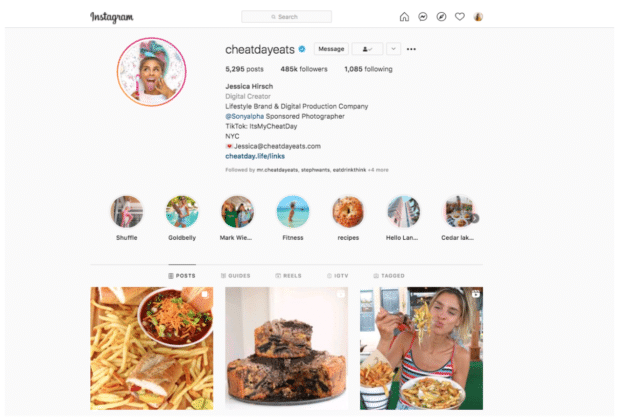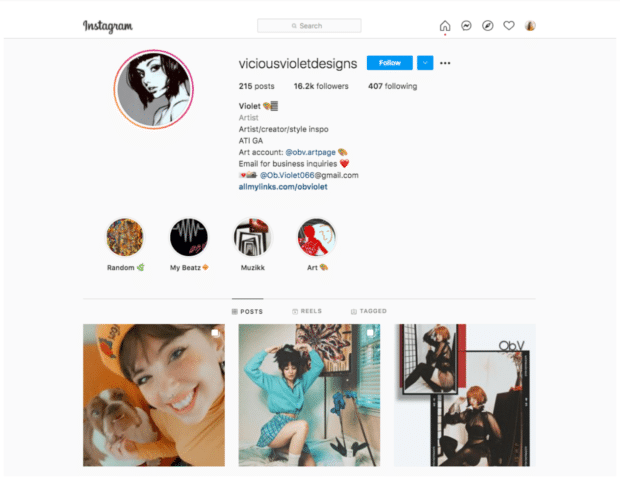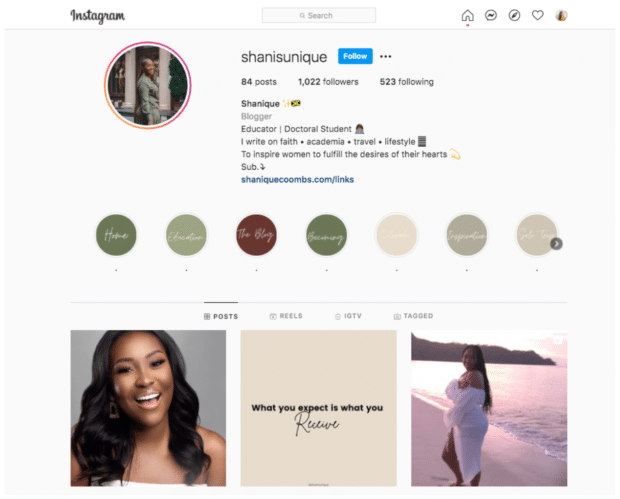Instagram Influencer Pricing: How to Determine Influencer Rates in 2023
by Robert Bland
·
You might know your favorite Instagram influencers’s preferred brand of dog food, the messy details of their last breakup or what’s in their medicine cabinet. But there’s one piece of information that rarely makes it into an Instagram story: how much that influencer is being paid.
The global influencer market is a $13.8 billion global industry. But what cut of that is your average, non-Kylie Jenner influencer getting per post?
Creating branded content involves time, labour, skill, and production costs. And those things aren’t paid for with products and freebies.
And paying the right price pays off. But what is the right price?
Read on to find the best formula for calculating rates, the ballpark cost of different types of posts, and other factors that might affect influencer pricing for your next influencer marketing campaign.
How to calculate fair Instagram influencer rates
Long story short: Prices in this industry vary greatly and there’s no standard rate card.
Allegedly, a post from model Emily Ratajkowski would cost $80,700. Rumours are that Demi Lovato charges at least $668,000, while Dwayne “The Rock” Johnson takes home a cool $1.5 million for crafting a post for his 187 million followers. Even for the biggest celebrities (and even among the Kardashians themselves!), there seems to be no hard-and-fast rule.
However, there are ways to make sure brands are getting value from their sponsored post, and influencers are being fairly compensated for their work.
Rates should be based around an influencer’s follower count and engagement rate, but less-quantitative factors like star power, talent, or access to a niche audience can impact a rate as well.
Covering any expenses associated with a shoot (like renting a studio, hiring a hairstylist, et cetera) will also be a factor.
Most pricing starts with one of these baseline formulas and goes up from there.
- Engagement rate per post + extras for type of post (x #of posts) + extra factors = total rate.
- The unspoken industry standard is $100 per 10,000 followers + extras for type of post (x # of posts) + additional factors = total rate.
Of course, your brand goals will be a factor as well in determining which influencer will offer the most value.
If your goal is brand awareness
Do you want quantity or quality with your outreach? If sheer numbers are what you’re looking for, a macro-influencer with hundreds of thousands of followers may be your best partner for your next campaign.
Conversely, if you’re hoping to get in front of a specific audience, finding the right micro- or nano- influencer with a primo niche audience might be even more powerful for brand awareness. See the section on “types of Instagram influencers” below for more details.
If your goal is conversions
An influencer’s engagement rate is one of the most reliable ways to predict conversions on Instagram.
So if your goal is conversions, an influencer’s engagement rate may matter more than follower count.
Engagement rates can be calculated by adding up all engagements on a post (likes, comments, clicks, shares), dividing by follower count, and multiplying by 100.
Price per Instagram post
Typically, influencers will have a press kit describing their rates and the types of partnerships available. Depending on the campaign, bundled content or special rates can also be worked out to reduce labor and costs.
Instagram post (photo)
A standard sponsored Instagram post typically includes a photo and caption. In some cases the product is featured in the image. In other cases, like when a service is being promoted, the caption is more crucial.
Using the formulas above, you might roughly expect a photo post to cost under $2,000 for accounts with under 100,000 followers. For macroinfluencers, you might expect to pay in the $5,000 to $10,000 range.
A popular formula many influencers use* is:
Average price per IG post (CPE) = Recent Average Engagements x $.14.
Instagram post (video)
Video’s star continues to rise on social, and Instagram is no different, tracking an 80 percent year-over-year increase.
Most content creators appreciate that a video involves greater production costs than a photo, but the added investment can often translate into more than just added engagement.
Many influencers use this formula when calculating what to chard for Instagram video posts*:
Price per IG video (CPE) = Recent average engagement x $0.16
Instagram post giveaway/contest
Instagram contests are a great way to grow followers and brand awareness. Typically a contest involves asking a user to do something for a chance to win a prize, whether it’s tagging a friend, liking your account, or sharing a post.
Because the combination of content required for executing a contest would be unique to each brand and influencer, the best way to estimate what it would cost is looking at the individual elements and adding those up: for instance, do you want five photo posts and a Story to promote your frozen-yogurt-for-life giveaway? Crunch the numbers and you’ve got a ballpark figure to start with.
Price per Instagram contest = (# of posts*0.14) + (# of videos*0.16) + (# of Stories*price per Story)
Instagram Story
An Instagram story is a photo or video that vanishes after 24 hours. Production quality can range from off-the-cuff smartphone footage to polished uploaded content, and costs will vary accordingly.
One formula you could use to calculate the cost of Instagram stories is*:
Price per Instagram Story = Recent average view x $0.06
Instagram Story with swipe up
The swipe up feature on Instagram is a seamless way to earn in-app conversions and website visits. And since links are hard to come by in Instagram’s ecosystem, story swipe ups have added value. So Instagram Stories with swipe up will likely cost more than the average cost for a Story post itself. (See above)
We suggest charging your regular price for a Story, plus a price per “swipe” or website visit or conversion. Determining what that swipe up or conversion is worth will vary depending on the product being sold. A conversion on a hot tub, for example, is worth more than a conversion on a lipstick. But you could start by asking for 3% to 10% of each sale.
Try this formula when calculating the cost of an Instagram Story with swipe up:
Price per Instagram story with swipe up = price per Instagram story + price per swipe up
Note that if you’re working with a micro-influencer that has fewer than 10,000 followers or is not verified, they may not have access to this feature.
Instagram Story with poll
Adding a poll to an Instagram Story is a low-cost way to learn more about an influencer’s followers (and your prospective customers). There may be additional charges based on how time or labor intensive preparing or monitoring this is for the influencer — so expect this to cost more than a typical story. (See above)
Price per Instagram story with poll = price per Instagram story (Recent average view x $0.06) + price per poll (hourly rate for extra labour)
Instagram Story AMA
Any Instagram Story with an additional interactive element to it — whether that’s an Instagram Live or a series of posts inspired by the Questions sticker — is going to cost more than a standard sponsored Instagram Story, and will vary by influencer.
Brand Takeover
A brand takeover usually involves hosting the influencer’s content on your brand’s feed for an agreed upon length of time. A takeover agreement may involve asks for the influencer to promote it a certain number of times from their account–in posts and/or Stories.
In this case you might use a formula adding up all the different types of posts involved in your brand takeover, plus your hourly rate for planning and strategizing (if applicable).
Also, because the goal of a brand takeover is usually to gain new followers, you may want to consider charging by how many new followers the brand gets as a result of your takeover.
Caption Mention
Because a caption mention will likely require the least production costs or time than any of these other influencer product options, it’s likely this will be your cheapest option. But, of course, this still varies by the influencer.
Affiliate Marketing
Affiliate marketing is one of the most common ways to make money on Instagram. It’s the practice of having an influencer who is repping your product earn a commission for every sale of said product.
As of 2021, Instagram influencers generally make 5-30% commission in affiliate marketing contracts, with bigger influencers starting in the 8-12% range.
Types of Instagram influencers
From personal finance to plant-based influencers, there are nano, micro, power middle, macro and mega influencers in every category. Depending on your Instagram marketing goals, certain influencers may be a better match for your brand.
For brands looking to create widespread buzz, macro-influencers with large follower accounts may be the best bet. Macro-influencers typically have more than 200,000 followers, which gives them the ability to reach a wider audience. (Or, go even bigger with a mega influencer: those with followings of one million or more!)
Micro influencers, meanwhile, have 25,000 followers or less, and are very often popular in location or topic-specific communities. They specialize in a range of industries of categories, including anything from sports and gaming, to travel and food.
Want to get even more niche? Try working with a nano influencer: accounts with 1,000 to 10,000 followers.
Power middle influencers fall right in the middle of them all, as you probably guessed, with a highly engaged audience in the 10,000 to 200,0000 range.
Other factors that affect Instagram influencer pricing
Brands in search of quality partnerships should budget for these cost factors when marketing with influencers.
Usage rights
If you want to maintain ownership of the content you create with an influencer, so that you can use it on other platforms or down the line, this will likely impact the influencer’s rate.
Exclusivity
Most contracts include an exclusivity clause, in which the influencer agrees not to work with competitors for a determined length of time. Since this could cost influencers prospective deals, it will affect the cost.
Social amplification
Chances are, influencers are making waves on other platforms, too. Brands can negotiate cross-posting deals to really maximize the reach of a paid influencer post.
Niche demographics
Does the influencer have intimate access to a group that’s valuable to your brand? They may charge a premium. Supply and demand, baby!
Hiring photographers
Various production related costs such as how long it takes to produce the content (labor), props, clothing, hair and makeup, photography, editing, and travel, should be factored into influencer rates.
Agency fees
Many influencers are represented by managers or agencies such as Crowdtap, Niche, Tapinfluencer, or Maker Studios. These companies will typically charge handling fees.
Campaign length
The length of the campaign will have a direct affect on influencer pricing based on the added labour, content, and exclusivity requirements attached to it.
Timing
Depending on how much time a brand gives an influencer to create content, a rush fee may be applied.
Brand fit
If an influencer feels that a company lacks a level of affinity with their personal brand, they may charge for what the partnership may cost them in credibility.
Content type
Some types of content are more difficult or time consuming to produce than others. Influencers may give discounts for easier-to-execute formats, or charge more for those which are more intensive.
Link in bio
If the goal is to drive traffic, making sure there’s a link to your website somewhere is going to be key. It’s not uncommon for influencers to charge extra to include a link in bio.
Now that you have a better sense of influencer pricing, learn more influencer marketing tips, plus how to work with an Instagram influencer.




